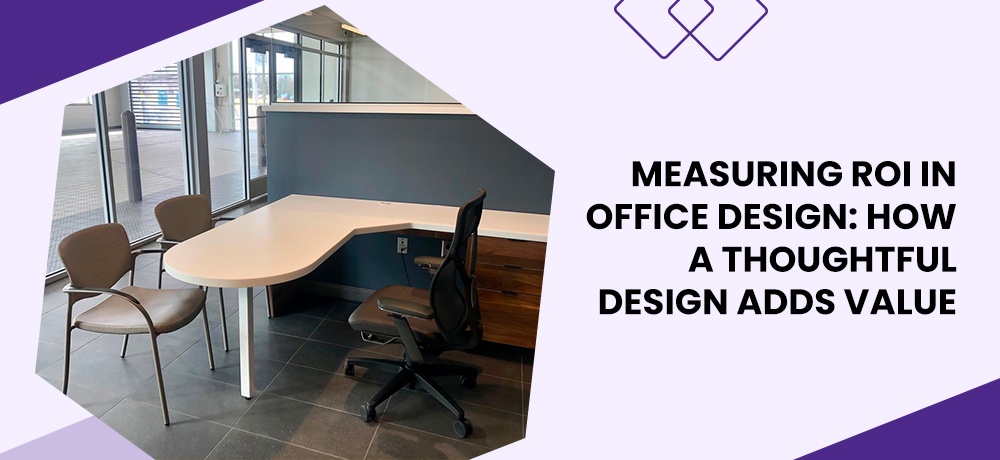Measuring ROI in Office Design: How a Thoughtful Design Adds Value

In the dynamic landscape of business, every investment demands a clear demonstration of its worth. The office space, once seen merely as a functional necessity, has evolved into a strategic tool that can significantly impact a company’s bottom line. However, quantifying the return on investment (ROI) of office design goes beyond aesthetics; it's about understanding the tangible and intangible benefits that a well-thought-out design brings to the table.
The Shift in Perspective
Gone are the days when an office was merely a physical location where work was conducted. Today, it's a dynamic environment influencing productivity, employee satisfaction, brand identity, and even talent acquisition. A thoughtfully designed office space is an investment that yields returns in multifaceted ways.
Tangible Metrics of ROI
Productivity Enhancement: A workspace that is ergonomically optimized, strategically laid out, and equipped with the right tools fosters productivity. Studies have consistently shown that well-designed spaces can lead to a substantial increase in productivity levels among employees.
Space Utilization Efficiency: An effective office design maximizes space utilization, potentially reducing real estate costs by optimizing the use of available square footage. Through flexible layouts and smart design, companies can often achieve more with less physical space.
Energy Efficiency and Cost Savings: Sustainable design elements, such as energy-efficient lighting, smart climate control systems, and recycled materials, not only reduce the environmental impact but also lower operational costs over time.
Intangible but Valuable Returns
Employee Satisfaction and Retention: A thoughtfully designed office space reflects a company’s commitment to its employees' well-being. This can boost morale, enhance job satisfaction, and contribute to higher employee retention rates, ultimately saving costs associated with turnover.
Brand Image and Talent Attraction: An office with a striking design that aligns with a company’s values and culture serves as a powerful branding tool. It not only attracts potential clients but also appeals to prospective employees who seek an inspiring and progressive work environment.
Measuring the ROI: Challenges and Strategies
Quantifying the ROI of office design isn’t always straightforward. However, various methods like pre- and post-occupancy evaluations, employee surveys, cost analyses, and performance metrics can be employed to gauge the impact.
1. Pre-Occupancy Benchmarking: Establish baseline metrics before the new design implementation. This could include employee surveys, productivity assessments, and operational costs.
2. Post-Occupancy Evaluation: Measure the impact post-implementation. Gather feedback on the new design's effect on productivity, collaboration, and employee satisfaction.
3. Continuous Feedback Loop: Implement a system for ongoing evaluation and improvement. Regularly solicit feedback and make adjustments to further optimize the workspace.
Investing in office design isn’t just an aesthetic endeavor; it’s a strategic decision that can yield significant returns for a company. By considering both the tangible and intangible benefits and employing thorough measurement strategies, businesses can effectively gauge the ROI of their office design initiatives. A well-designed office space isn’t merely an expense—it’s an asset that drives value, fosters growth, and propels success in the competitive business landscape.